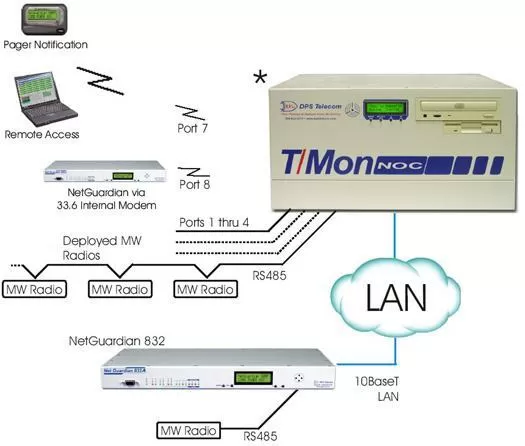Download our free Monitoring Fundamentals Tutorial.
An introduction to Monitoring Fundamentals strictly from the perspective of telecom network alarm management.
1-800-693-0351
Have a specific question? Ask our team of expert engineers and get a specific answer!
Sign up for the next DPS Factory Training!

Whether you're new to our equipment or you've used it for years, DPS factory training is the best way to get more from your monitoring.
Reserve Your Seat Today
The P4 Protocol Software Module will allow you to collect alarms and provide remote login functions for your microwave radios. The overall goal of this application is to provide you with a single point of monitoring, the T/Mon NOC Master Station. Preloaded with the P4 Software Module, it will be able to receive alarms over RS485. This application features NetGuardian RTUs that have the ability to provide alarm monitoring as well as act as a terminal server for the microwave radios, thus giving those very same radios the ability to report over IP to the T/Mon NOC. In addition, the NetGuardians will provide an improved view of the remote sites and report those alarms the T/Mon NOC over IP, RS485 or even a plain old telephone (POTS) line in case of LAN failure.
With the T/Mon NOC, you can begin using Pager alerts and escalation. T/Mon NOC can automatically send detailed alarm notifications via pager, cell phone, PDA or e e-mail, so the right information is put directly in your hands, not locked up in a NOC console. Escalation notifications to supervisors ensure alarm acknowledgment and problem resolution.
Filter nuisance alarms to save operational time and focus efforts on serious emergencies. T/Mon NOC filters out nuisance alarms, self self-correcting alarms, and oscillating conditions, ensuring staff response to serious network threats. Correlate alarms for root cause analysis. Finding the underlying cause between apparently unconnected alarms can take hours of patient detective work. T/Mon NOC simplifies root cause analysis by correlating alarms with user user-defined derived alarm formulas. Derived alarms can include date/time variables and input from dozens of alarms, so you can capture any repeatable combination of events in a single alarm.